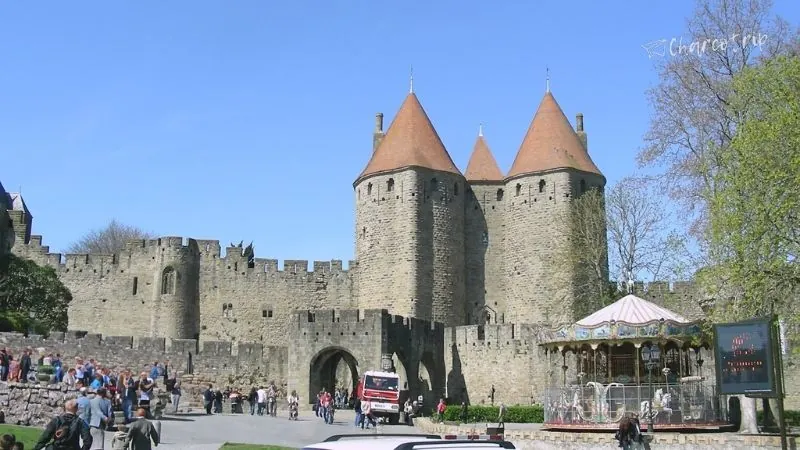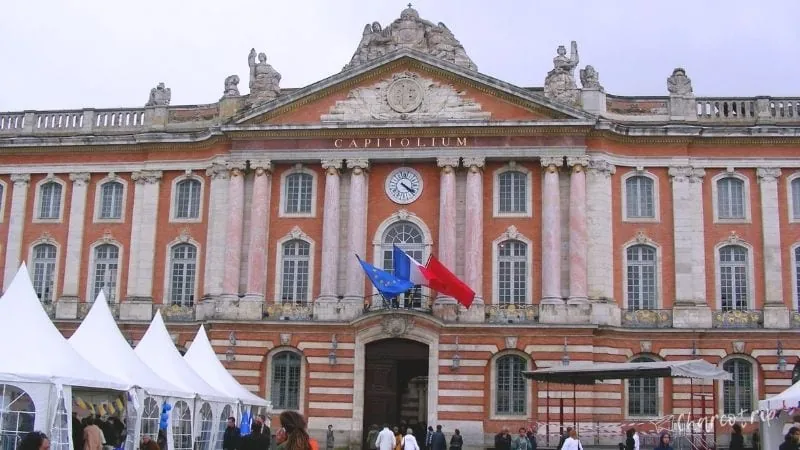We show you the Picasso Museum in Antibes and give you the information to visit it. Enjoy these works of cubism.
On this occasion, we will show you the Picasso Museum in the city of Antibes. Picasso lived the last years of his life on the Côte d’Azur, and we are going to show you part of the legacy that he left in this region of France.
The Grimaldi Castle
The museum is located in the immediate vicinity of the Grimaldi Castle. From 1385 to 1608, it was inhabited by the family of the principality of Monaco and indeed it is because of them that it bears that name. In 1925, it was bought by the municipality of Antibes and became the Grimaldi Museum. Years later, the building was classified as a historical monument.

Picasso on the Côte d’Azur
In 1946 Pablo Picasso accepted the proposal of Romuald Dor de la Souchere, in charge of what was then called the Grimaldi Museum, who offered him to use part of the castle as a workshop to carry out his work. As a result of this, Picasso spent two months here making works.
In 1947, a room was dedicated to Picasso. In subsequent years he donated numerous works to the museum, this led, in 1966, to the decision to change the name of the museum to the Picasso Museum.

Information to visit the Picasso Museum in Antibes
Visiting hours: from June 15 to September 15, the hours are from 10AM to 6PM. The rest of the year is from 10AM to 1PM / 2PM to 6PM.
Entrance fee: 8 €
Get your flight to France at the best price

Visiting the Picasso Museum in Antibes
Several floors of the castle are visited, in the first part we will see works by other artists, and then move on to the works of Picasso, among which we will see paintings, drawings, rugs and sculptures. At the end of the visit, we will see the terrace with a view of the Mediterranean that surely must have helped the painter to be inspired.
Works by other artists
We can see several works and there is something for all tastes. I have to say that some of them didn’t reach my eye, that is, I didn’t understand them at all but there were others that, without understanding the concept, I loved them and I don’t know why. Like this one:

Picasso works
We go to the upper floor where we finally find works by Picasso, the first room we enter we see paintings and sculptures. Some works such as The Goat (1946), The Keys of Antibes (1946), The Urchin Eater (1946), The Joy of Living (1946), Still Life with an Owl and Three Sea Urchins (1946).
In “The joy of living” you can see those forms that could seem almost childish. What I love about this painting is that it managed to make me smile when I saw it. The one with the Still Life with an owl and three sea urchins, let’s say that it is easy to locate the owl, but difficult to find the shape of that animal 😀
The keys of Antibes, I loved it, and I don’t know why. They are cute and that’s it.
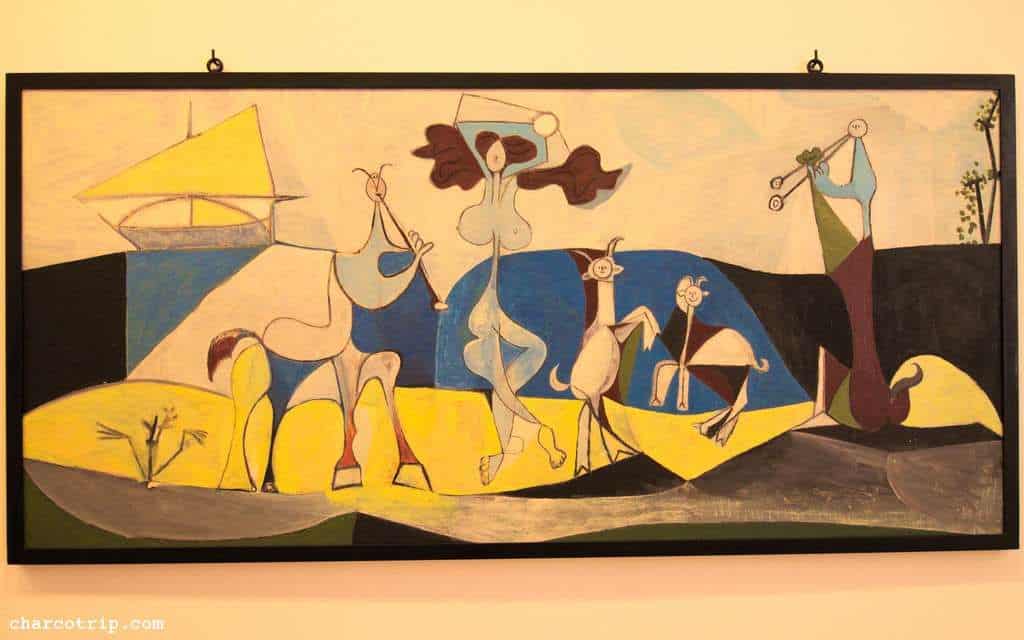
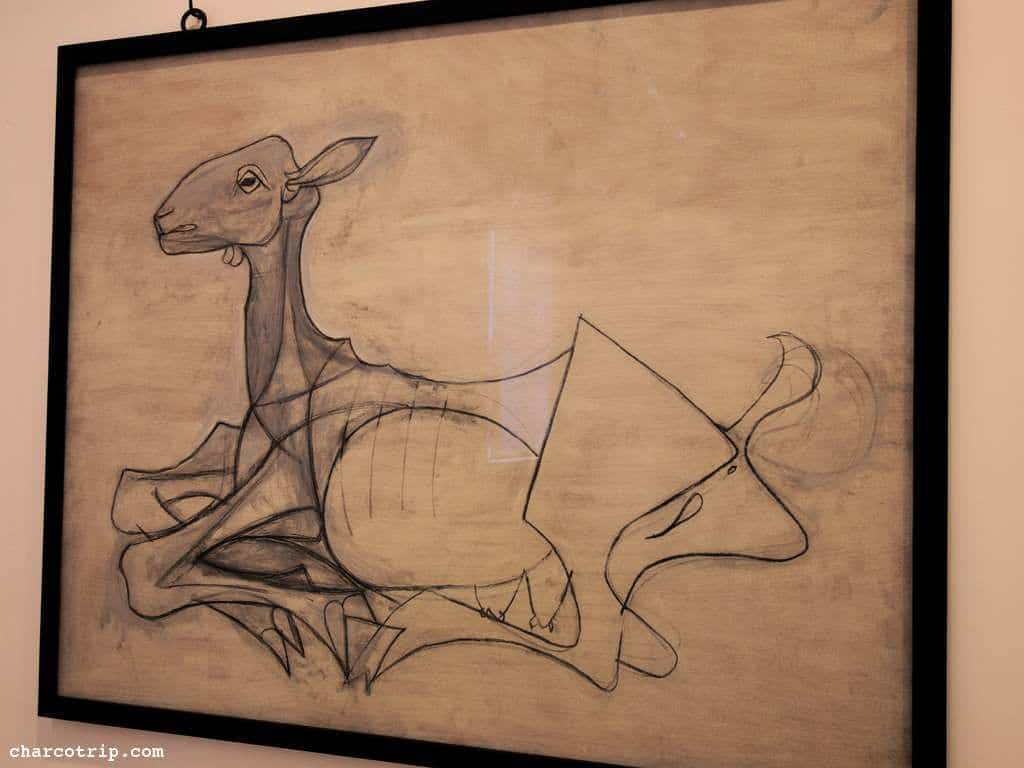


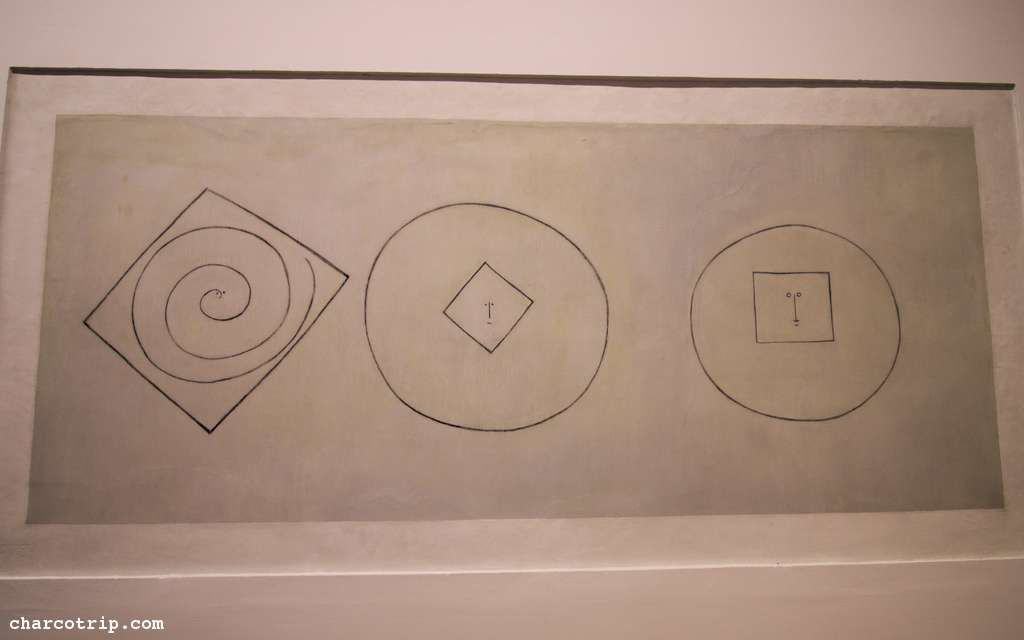
Satyr, faun and centaur with trident
In this same room we find the enormous painting of Satyr, faun and centaur with trident (1946), they also show us photos of when the artist made it right there. They explain to us that, in the painting, we can see the strokes that Picasso made and that he later undid to make others, without hiding the changes of direction.


More fauns
We continue advancing in the rooms, and we find other paintings with themes of fauns, and still life. We also find other rooms of the painter’s drawings.


Nude lying in a white bed
We also saw several versions of a painting of a nude woman lying down, of course in a cubist version. The one in the photo is the Nude lying in a white bed (1946), here if the shapes can be easily distinguished.

Sculptures
Almost at the end of the visit, we arrived at a room with sculptures, paintings and some ceramics that I loved. They are huge plates all decorated differently, more than one make you smile.

Las meninas
Another work in the room that I loved was Picasso’s interpretation of Las meninas, of course, these are a cubist version and if I hadn’t already seen the original work it would be difficult for me to distinguish the characters

Ceramics
And to finish, I leave you with some of the ceramics in the room:

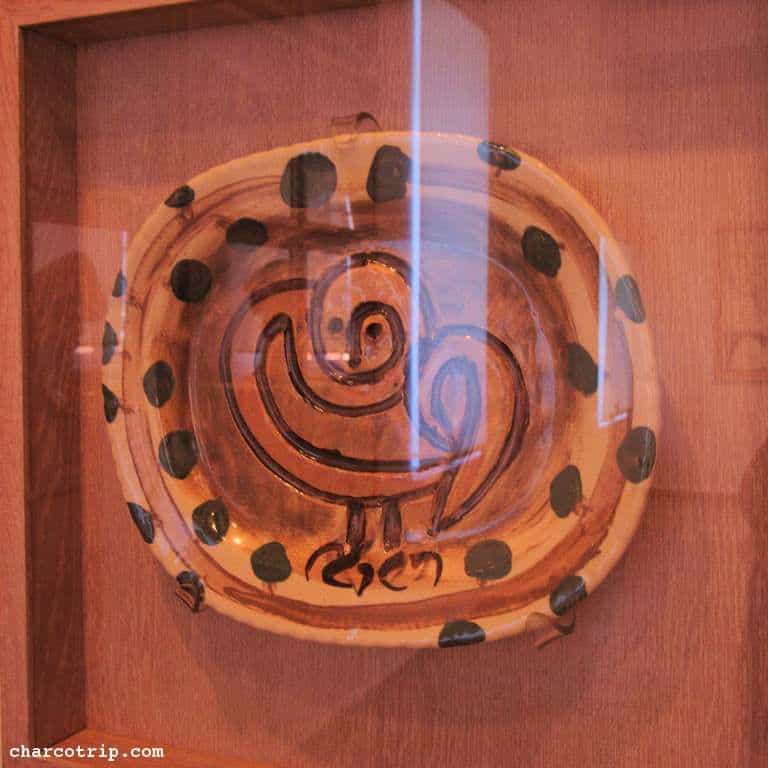

What is cubism?
Let’s be honest, more than one has to think (at least it happened to me) upon seeing this type of painting that they are like drawings made by children. But let’s go step by step. These types of works are part of the movement called cubism.
Cubism developed between 1907 and 1914, created precisely by Picasso together with Georges Braque. In this type of work the perspective is different, it tries to represent the world through geometric shapes. Something is shown with what is known about it, without taking into account a particular point of view or perspective. That is why the eye and the nose in profile appear glued together. The feeling of depth disappears.
So, it’s another artistic trend, and we may or may not like it. But you have to know that if you don’t like it, you’re not wrong. It is like that and that’s it. There is art for all tastes.

The view to the sea
The exit is through the courtyard of the castle, which has some sculptures and a beautiful view of the Mediterranean Sea. We can imagine that working with this view must have been very pleasant for the painter.

View of the Antibes Cathedral
And right next to the Picasso Museum we have the Antibes Cathedral which was built in the 12th century and is Romanesque (original), Baroque and neoclassical in style. Inside it is simple.

Some of the links in this article include affiliate links. This means that if you buy a product listed here by following these links, we'll receive a commission. The use of this link does not increase the final price for you and thus helps us to keep our blog alive.

